ACT, Australia is a region located in the southeastern part of the country, bordered by New South Wales. The region is known for its diverse and unique environment, with a variety of landscapes ranging from grassy plains to rugged mountains.
The weather in ACT is generally mild, with warm summers and cool winters. The region is home to a wide range of animals, including kangaroos, wallabies, wombats, and possums.
The area is also known for its rich birdlife, with over 300 species recorded in the region. The environment in ACT is carefully managed and protected, with a focus on preserving the natural beauty and biodiversity of the region.
.
Types Of Ants In Act, Australia
The Types Of Ants In Act, Australia are listed here: Coccid-Tending Ants, Adlerzia, Amblyopone, Anonychomyrma, Funnel Ants, Austroponera, Brachyponera, Carpenter And Sugar Ants, Sneaking Ants, Army Ants, Colobostruma, Acrobat Ants, Cryptic Ants, Dolly Ants, Froggattella, Crypt Ants, Iroponera, Leptomyrmex, Melophorus, Shield Ants, Mesostruma, Trailing Pharaoh And Timid Ants, Mite-Eating Ants, Myrmecorhynchus, Notoncus, Crazy Ants, Orectognathus, Paraparatrechina, Big Headed Ants, Platythyrea, Spiny Ants, Porthole Ants, Probolomyrmex, Pseudonotoncus, Sphinctomyrmex, Stigmacros, Vampire Ants, Miniature Trap-Jaw Ants, Tapinoma, Pavement Ants.
If you’ve found some other ants in this region, contact us, and we will add them to the list!
1) Coccid-Tending Ants, Acropyga
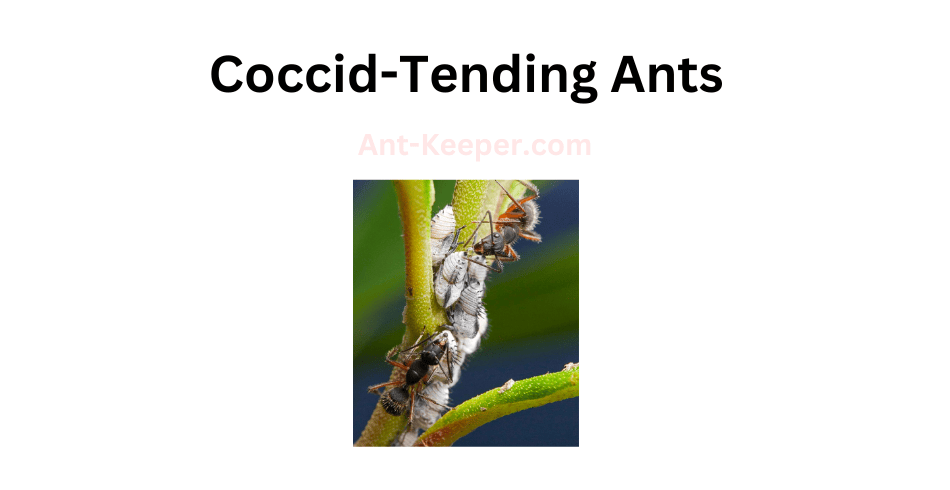
Coccid-tending ants are a group of ants that have a mutualistic relationship with coccids, also known as scale insects.
These ants protect and care for the coccids, which in turn provide the ants with a sugary substance called honeydew.
Coccid-tending ants are typically small in size, ranging from 2 to 5 millimeters in length.
They have a reddish-brown coloration and a slender body shape.
These ants are commonly found in forests and grasslands, where they build nests in soil or under rocks.
The relationship between coccid-tending ants and coccids is a classic example of mutualism.
The ants protect the coccids from predators and parasites, and also move them to new feeding sites when necessary.
In return, the coccids secrete honeydew, which the ants consume as a source of energy.
Coccid-tending ants have been observed to actively farm and cultivate coccids, moving them to new locations and even pruning the plants on which they feed to encourage the growth of new coccids.
This behavior has been shown to increase the overall productivity of the ant-coccid mutualism.
Overall, coccid-tending ants are an important component of many ecosystems, playing a key role in the maintenance of plant and insect populations.
Their mutualistic relationship with coccids highlights the complex and interconnected nature of ecological systems.
2) Adlerzia
Adlerziabe is a species of ant that belongs to the scientific family Formicidae.
These ants are known for their unique physical characteristics and behavior patterns that make them stand out from other ant species.
Adlerziabe ants are relatively small in size, measuring only a few millimeters in length.
They have a dark brown or black coloration and a distinctively elongated head that sets them apart from other ants.
One of the most interesting aspects of Adlerziabe ants is their social behavior.
These ants live in large colonies that can contain thousands of individuals.
Within the colony, there is a strict hierarchy, with the queen ant at the top and the worker ants at the bottom.
The queen is responsible for laying eggs, while the workers are responsible for gathering food, caring for the young, and defending the colony.
Adlerziabe ants are also known for their unique foraging behavior.
Unlike other ant species, which tend to follow a straight path when searching for food, Adlerziabe ants use a more complex system of trails.
They create a network of paths that lead to different food sources, and they use pheromones to communicate with each other and navigate the trails.
Overall, Adlerziabe ants are a fascinating species that have captured the attention of scientists and nature enthusiasts alike.
Their unique physical characteristics and social behavior make them a valuable subject of study, and they continue to provide insights into the complex world of ant colonies and social insects.
3) Amblyopone
Amblyoponebe is a species of ant that belongs to the Amblyoponinae subfamily.
These ants are known for their unique physical characteristics, including their elongated mandibles and flattened heads.
They are typically small in size, measuring only a few millimeters in length.
Amblyoponebe ants are primarily found in forested areas, where they live in underground nests.
They are known to be solitary hunters, preying on other insects and arthropods.
Their elongated mandibles are used to capture and subdue their prey, which they then carry back to their nests to feed on.
Despite their small size, Amblyoponebe ants are known for their aggressive behavior.
They are not afraid to defend their nests and will attack any intruders that come too close.
This makes them a formidable opponent for other insects and animals that may try to invade their territory.
Overall, Amblyoponebe ants are a fascinating species that play an important role in their ecosystem.
Their unique physical characteristics and aggressive behavior make them a fascinating subject for researchers and nature enthusiasts alike.
4) Anonychomyrma
Anonychomyrmabe is a species of ant that belongs to the Formicidae family.
These ants are known for their unique physical characteristics, including their elongated mandibles and slender bodies.
They are typically found in forested areas and are known to be active during the day.
One of the most interesting aspects of Anonychomyrmabe is their social behavior.
They live in colonies that can range in size from a few dozen to several hundred individuals.
Within these colonies, there is a strict hierarchy, with the queen ant at the top.
The queen is responsible for laying eggs, while the other ants in the colony take care of the young and gather food.
Anonychomyrmabe is an omnivorous species, meaning that they eat both plants and animals.
They are known to feed on a variety of insects, as well as fruits and seeds.
They are also known to engage in a behavior called trophallaxis, where they exchange food with other members of the colony.
Despite their small size, Anonychomyrmabe plays an important role in their ecosystem.
They help to control the populations of other insects and contribute to the nutrient cycling process by breaking down organic matter.
Overall, Anonychomyrmabe is a fascinating species of ant that exhibits unique physical and social behaviors.
Their importance in their ecosystem highlights the importance of understanding and protecting all species, no matter how small they may be.
5) Funnel Ants, Aphaenogaster
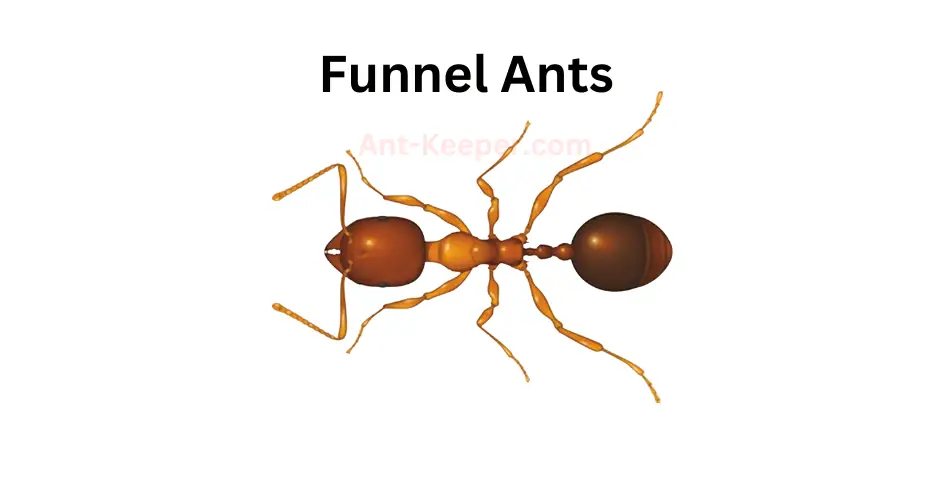
The Funnel Ants, also known as Aphaenogaster ants, are a species of ants that are commonly found in various habitats around the world.
These ants are known for their unique nesting behavior, where they construct funnel-shaped nests that are typically located in soil or leaf litter.
The Funnel Ants are relatively small in size, with workers measuring between 3-5mm in length.
They are typically reddish-brown in color and have a slender body shape.
These ants are known for their strong mandibles, which they use to collect and transport food back to their nests.
One of the most interesting aspects of the Funnel Ants is their nesting behavior.
These ants construct funnel-shaped nests that are typically located in soil or leaf litter.
The entrance to the nest is narrow and funnel-shaped, which helps to protect the colony from predators and other threats.
Inside the nest, the ants create a series of chambers and tunnels that are used for different purposes, such as storing food, caring for the brood, and housing the queen.
The Funnel Ants are omnivorous, meaning that they feed on both plant and animal matter.
They are known to collect a wide variety of food items, including seeds, insects, and other small invertebrates.
These ants are also known to tend to aphids, which they use for their honeydew secretion.
Overall, the Funnel Ants are a fascinating species of ants that are known for their unique nesting behavior and omnivorous diet.
They play an important role in their ecosystems, helping to control populations of other insects and contributing to nutrient cycling in the soil.
6) Austroponera
Austroponerabe is a species of ant that belongs to the family Formicidae.
These ants are known for their small size and unique physical characteristics.
They have a dark brown or black coloration and are typically less than 2 millimeters in length.
One of the most distinctive features of Austroponerabe ants is their mandibles.
These ants have long, curved mandibles that are used for capturing prey and defending their colony.
They are also known for their aggressive behavior and will attack other ants or insects that come too close to their nest.
Austroponerabe ants are typically found in forested areas and are known to nest in soil or leaf litter.
They are also known to form small colonies, with only a few hundred individuals in each group.
Despite their small size, these ants play an important role in their ecosystem by helping to control the population of other insects and by aerating the soil.
In addition to their ecological importance, Austroponerabe ants have also been the subject of scientific research.
Scientists have studied their behavior and physiology in order to better understand the evolution and ecology of ants.
This research has led to a greater understanding of the complex social structures and behaviors of these fascinating insects.
Overall, Austroponerabe ants are a unique and important species that play a vital role in their ecosystem.
Their small size and aggressive behavior make them a formidable predator, while their ecological importance and scientific significance make them a valuable subject of study for researchers around the world.
7) Brachyponera

Brachyponera is a genus of ants belonging to the subfamily Ponerinae.
One of the species in this genus is Brachyponera sennaarensis, commonly known as the Sennaar ant.
These ants are relatively large, measuring up to 12mm in length, and are known for their aggressive behavior.
The workers of Brachyponera sennaarensis are dark brown in color and have a shiny exoskeleton.
They have a powerful sting and are known to attack other insects and even small vertebrates.
These ants are also known to forage for food in large groups, and can quickly overwhelm their prey.
Brachyponera sennaarensis is found in a variety of habitats, including forests, grasslands, and deserts.
They are known to build their nests in soil, under rocks, and in tree trunks.
These ants are also known to be nocturnal, and are most active during the night.
Despite their aggressive behavior, Brachyponera sennaarensis is an important part of the ecosystem.
They help to control the population of other insects and play a vital role in the food chain.
However, their powerful sting and aggressive behavior make them a potential danger to humans and other animals.
8) Carpenter And Sugar Ants, Camponotus

Carpenter ants and sugar ants are two common species of ants found in many regions of the world.
Carpenter ants are known for their ability to excavate wood and create nests within it.
They are typically larger in size than sugar ants and have a black or dark brown coloration.
Carpenter ants are also known for their strong mandibles, which they use to chew through wood and other materials.
Sugar ants, on the other hand, are smaller in size and have a yellow or brown coloration.
They are named for their preference for sugary foods and are often found in kitchens and other areas where food is stored.
Sugar ants are also known for their ability to form large colonies, with thousands of individual ants working together to gather food and care for their young.
Both carpenter ants and sugar ants play important roles in their ecosystems.
Carpenter ants help to break down dead wood and other plant material, which helps to recycle nutrients back into the soil.
Sugar ants help to disperse seeds and pollinate plants, which helps to maintain healthy ecosystems.
However, both species can also be pests when they invade human homes and buildings.
Carpenter ants can cause damage to wooden structures, while sugar ants can contaminate food and be a nuisance to homeowners.
It is important to take steps to prevent ant infestations and to control them if they do occur, in order to protect both human health and the health of the environment.
9) Sneaking Ants, Cardiocondyla
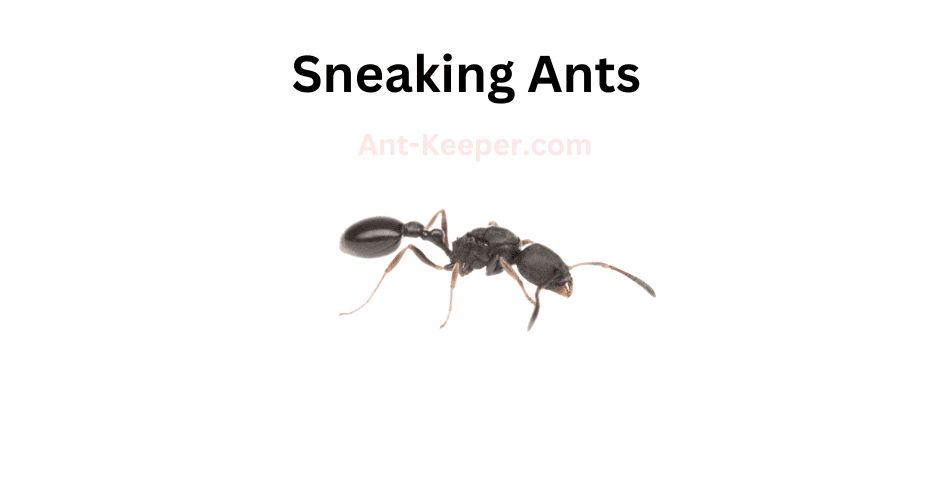
Sneaking Ants, also known as Camponotus obscuripes, are a species of ant that are commonly found in forested areas.
These ants are known for their ability to move quietly and quickly, making them difficult to detect.
Sneaking Ants are typically black or dark brown in color and range in size from 5 to 12 millimeters in length.
They have a distinctive, flattened head and a narrow waist, which helps them to navigate through tight spaces.
One of the most interesting aspects of Sneaking Ants is their behavior.
These ants are known for their ability to sneak up on other insects and steal their food.
They are also known to raid the nests of other ant species, taking their eggs and larvae back to their own colony to raise as their own.
Sneaking Ants are omnivorous, meaning they eat both plant and animal matter.
They have been observed feeding on nectar, honeydew, and small insects.
They are also known to scavenge for food, often taking advantage of the leftovers from other insects.
In terms of reproduction, Sneaking Ants have a unique system.
The colony is typically led by a single queen, who is responsible for laying eggs.
However, there are also a number of worker ants who are capable of laying eggs as well.
These eggs are typically unfertilized and produce male ants, which are used for mating purposes.
Overall, Sneaking Ants are a fascinating species with unique behaviors and adaptations.
Their ability to move quietly and quickly makes them a formidable predator, and their omnivorous diet allows them to thrive in a variety of environments.
10) Army Ants, Cerapachys
Army ants are a type of ant that belong to the subfamily Dorylinae.
They are known for their aggressive behavior and their ability to form large colonies that can contain up to several million individuals.
Army ants are found in tropical and subtropical regions around the world, and they play an important role in the ecosystems where they live.
One of the most distinctive features of army ants is their nomadic lifestyle.
Unlike other ants that build permanent nests, army ants are constantly on the move, searching for food and new nesting sites.
They are also known for their impressive hunting skills.
When they come across prey, they swarm over it in large numbers, overwhelming it with their sheer numbers and powerful jaws.
Army ants are also social insects, with a complex hierarchy that determines the roles of each individual in the colony.
The queen is the largest ant in the colony and is responsible for laying eggs.
The workers are responsible for foraging, caring for the young, and defending the colony.
The soldiers are larger and have stronger jaws, which they use to protect the colony from predators.
Despite their aggressive behavior, army ants are an important part of many ecosystems.
They help to control the populations of other insects and small animals, and they provide food for larger predators such as birds and mammals.
In some cultures, army ants are even used as a source of food for humans.
Overall, army ants are fascinating creatures that have adapted to life in some of the most challenging environments on Earth.
Their nomadic lifestyle, impressive hunting skills, and complex social structure make them one of the most interesting species of ants in the world.
11) Colobostruma
Colobostrumabe is a fascinating species of ant that belongs to the Formicidae family.
These ants are known for their unique physical characteristics and behavior, which make them stand out from other ant species.
One of the most distinctive features of Colobostrumabe ants is their elongated mandibles, which are used for a variety of purposes, including defense and hunting.
These ants are also known for their large size, with workers measuring up to 10 millimeters in length.
Colobostrumabe ants are social insects that live in colonies, with each colony consisting of a queen, workers, and soldiers.
The queen is responsible for laying eggs, while the workers and soldiers are responsible for maintaining the colony and protecting it from predators.
These ants are omnivorous, meaning that they feed on both plant and animal matter.
They are known to forage for food in groups, with workers and soldiers working together to bring food back to the colony.
One interesting behavior of Colobostrumabe ants is their ability to form symbiotic relationships with other insects.
For example, they have been known to form mutualistic relationships with aphids, which provide them with a source of honeydew in exchange for protection from predators.
Overall, Colobostrumabe ants are a fascinating species that continue to intrigue scientists and researchers around the world.
Their unique physical characteristics and behavior make them a valuable subject of study for those interested in the ecology and behavior of social insects.
12) Acrobat Ants, Crematogaster

Acrobat ants, also known as Crematogaster spp., are a genus of ants that are found in various parts of the world.
These ants are known for their unique ability to contort their bodies and move in acrobatic ways, hence their name.
Acrobat ants are relatively small, with workers measuring between 2-5mm in length.
They are typically brown or black in color, with a slender body and long legs.
These ants are known for their aggressive behavior and will readily defend their nests against intruders.
One of the most interesting features of acrobat ants is their ability to use their mandibles to grip onto surfaces and contort their bodies in unusual ways.
This allows them to move along narrow branches, twigs, and other surfaces that would be difficult for other ants to navigate.
They are also able to use this ability to escape from predators, such as birds and other insects.
Acrobat ants are omnivorous, meaning that they will eat both plant and animal matter.
They are known to feed on insects, nectar, and honeydew, as well as fruits and seeds.
These ants are also known to tend to aphids, protecting them from predators in exchange for the sweet honeydew that the aphids produce.
In terms of their social structure, acrobat ants are typically organized into colonies that are led by a queen.
The queen is responsible for laying eggs, while the workers are responsible for foraging, caring for the young, and defending the nest.
Overall, acrobat ants are fascinating creatures that have adapted unique abilities to survive in their environments.
Their acrobatic abilities and aggressive behavior make them a formidable force in the insect world.
13) Cryptic Ants, Cryptopone

Cryptic ants are a species of ants that are known for their ability to blend in with their surroundings.
They are typically small in size, measuring only a few millimeters in length, and have a dark brown or black coloration that helps them to remain inconspicuous.
One of the most interesting features of cryptic ants is their ability to mimic the appearance of other insects.
For example, some species of cryptic ants have been observed mimicking the appearance of spiders, which helps them to avoid detection by predators that might otherwise prey on them.
Cryptic ants are also known for their highly social behavior.
They live in large colonies that can contain thousands of individuals, and they work together to gather food, care for their young, and defend their territory from other ants and predators.
Despite their small size, cryptic ants play an important role in their ecosystem.
They help to aerate the soil, control pest populations, and provide food for other animals.
In addition, they are an important food source for many birds and other predators.
Overall, cryptic ants are a fascinating species of ants that have evolved a number of unique adaptations to help them survive in their environment.
Their ability to blend in with their surroundings and mimic other insects is just one example of the many ways in which they have adapted to their surroundings over time.
14) Dolly Ants, Dolichoderus
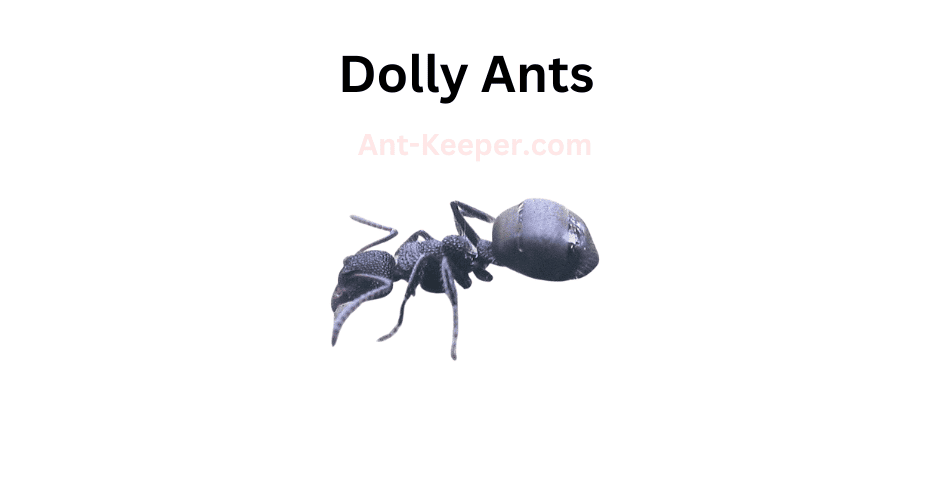
Dolly Ants, also known as Dolichoderus spp., are a species of ant that belong to the family Formicidae.
These ants are known for their distinctive elongated heads and bodies, which give them a unique appearance compared to other ant species.
Dolly Ants are typically found in forested areas, where they build their nests in soil or under rocks.
They are known to be highly social insects, living in large colonies that can contain thousands of individuals.
Within these colonies, there is a strict division of labor, with different ants taking on specific roles such as foraging, caring for the young, and defending the colony.
One interesting aspect of Dolly Ant behavior is their use of chemical communication.
These ants use pheromones to communicate with each other, leaving trails of scent that other ants can follow to locate food sources or to find their way back to the nest.
They also use pheromones to signal danger, which can trigger a coordinated response from the colony to defend against predators.
Dolly Ants are omnivorous, feeding on a variety of foods including insects, nectar, and plant sap.
They are also known to have a mutualistic relationship with certain plant species, where they protect the plants from herbivores in exchange for a source of food.
Overall, Dolly Ants are a fascinating species of ant with unique physical and behavioral characteristics.
Their social structure and use of chemical communication make them an important subject of study for researchers interested in understanding the behavior of social insects.
15) Froggattella
Froggattella is a species of ant that belongs to the Formicidae family.
These ants are known for their small size, measuring only a few millimeters in length.
They are typically found in forested areas, where they build their nests in soil or leaf litter.
Froggattella ants are known for their unique behavior of tending to the eggs and larvae of other ant species.
They are often found in association with other ant species, such as the Myrmecia and Pheidole ants.
Froggattella ants will care for the eggs and larvae of these other ants, protecting them from predators and ensuring their survival.
These ants are also known for their aggressive behavior when defending their nests.
They will swarm and attack any intruders, using their powerful mandibles to bite and sting.
Despite their small size, Froggattella ants are capable of inflicting painful bites on humans.
Froggattella ants are an important part of the ecosystem, playing a role in soil health and nutrient cycling.
They are also a food source for many other animals, including birds and reptiles.
Overall, Froggattella ants are a fascinating species with unique behaviors and important ecological roles.
16) Crypt Ants, Hypoponera
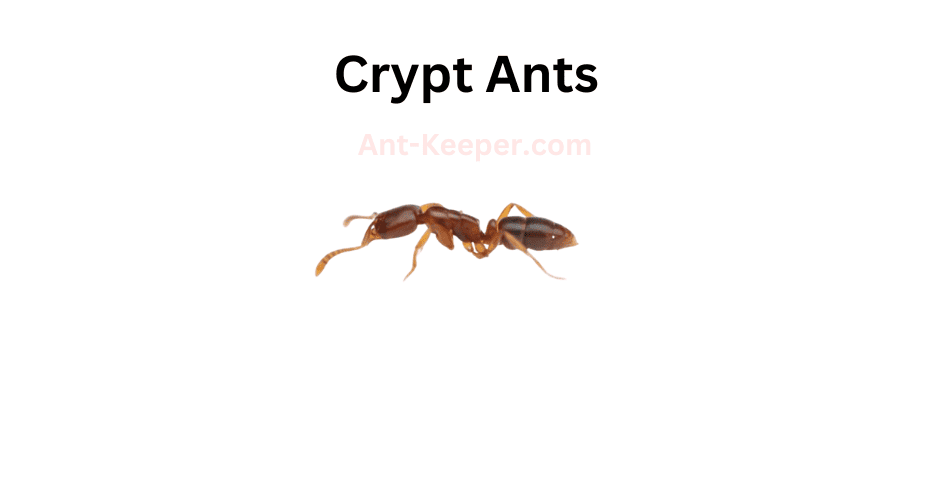
Crypt ants, also known as fungus-growing ants, are a group of ants that cultivate fungi for food.
They are found in various habitats, including forests, grasslands, and deserts.
Crypt ants are known for their unique nesting behavior, as they construct underground chambers to house their fungal gardens.
These ants have a symbiotic relationship with the fungi they cultivate.
The ants provide the fungi with a suitable environment for growth, while the fungi provide the ants with a source of food.
The ants also protect their fungal gardens from other insects and parasites.
Crypt ants are social insects, living in colonies that can range from a few dozen to several thousand individuals.
The colonies are organized into castes, with the queen being the largest and most important member.
The queen is responsible for laying eggs, while the workers are responsible for tending to the fungal gardens and caring for the young.
One interesting aspect of crypt ants is their ability to create "satellite" nests.
These nests are smaller chambers located near the main nest, and they serve as storage areas for food and as a place for the queen to lay eggs.
The satellite nests are connected to the main nest by underground tunnels, allowing the ants to move between them.
Overall, crypt ants are fascinating insects that have developed a unique way of obtaining food.
Their symbiotic relationship with fungi and their complex nesting behavior make them an important species to study in the field of entomology.
17) Iroponera
Iroponerabe is a species of ant that belongs to the scientific family Formicidae.
These ants are known for their unique physical characteristics and behavior patterns.
They are small in size, measuring only a few millimeters in length, and have a dark brown or black coloration.
One of the most distinctive features of Iroponerabe ants is their mandibles.
These are long and slender, and are used to capture prey and defend their colony.
They also have a pair of large compound eyes, which give them excellent vision and help them navigate their environment.
Iroponerabe ants are social insects, living in large colonies that can contain thousands of individuals.
They have a hierarchical social structure, with a queen at the top and workers and soldiers below her.
The queen is responsible for laying eggs, while the workers and soldiers take care of the colony and protect it from predators.
These ants are omnivorous, feeding on a variety of foods including insects, nectar, and plant sap.
They are also known to cultivate fungi, which they use as a food source.
Iroponerabe ants play an important role in their ecosystem, helping to control the populations of other insects and contributing to soil health through their activities.
They are also a fascinating subject of study for scientists, who are interested in understanding their behavior and biology.
18) Leptomyrmex
Leptomyrmex is a genus of ants belonging to the subfamily Dolichoderinae.
These ants are commonly known as spider ants due to their long and slender legs that resemble those of spiders.
The genus is distributed throughout various regions of the world, including tropical and subtropical areas.
Leptomyrmex ants are known for their aggressive behavior and are often found in large colonies.
They are also known for their unique hunting strategy, where they use their long legs to capture prey.
These ants are primarily carnivorous and feed on other insects, spiders, and small invertebrates.
The workers of Leptomyrmex ants are polymorphic, meaning they come in different sizes and perform different tasks within the colony.
The larger workers are responsible for foraging and defending the colony, while the smaller workers take care of the brood and tend to the queen.
The reproductive members of the colony are winged males and females.
These ants mate during a nuptial flight, after which the males die, and the females establish new colonies.
Leptomyrmex ants are important members of their ecosystems, as they help control the populations of other insects and contribute to nutrient cycling in the soil.
However, some species of Leptomyrmex ants are considered pests, as they can cause damage to crops and invade human dwellings.
Overall, Leptomyrmex ants are fascinating creatures with unique adaptations and behaviors that make them an important part of the natural world.
19) Melophorus
Melophorus is a genus of ants that belongs to the family Formicidae.
These ants are commonly found in various habitats such as forests, grasslands, and deserts.
The genus Melophorus is known for its diverse species, with over 100 species identified so far.
Melophorus ants are small in size, ranging from 2 to 5 millimeters in length.
They have a distinctive appearance, with a slender body and elongated mandibles.
The color of these ants varies from black to brown, and some species have a metallic sheen on their exoskeleton.
These ants are known for their aggressive behavior and are often seen engaging in territorial battles with other ant species.
They are also known to be scavengers, feeding on a variety of food sources such as dead insects, nectar, and honeydew.
One of the most interesting aspects of Melophorus ants is their ability to navigate using visual cues.
They have been observed using landmarks and the position of the sun to navigate back to their nest.
This is a unique trait among ants, as most species rely on chemical cues to navigate.
Melophorus ants are also known for their complex social structure.
They live in colonies that can range from a few dozen to several thousand individuals.
The colony is led by a queen, who is responsible for laying eggs and maintaining the social order within the colony.
In conclusion, Melophorus ants are a fascinating genus of ants that exhibit unique traits such as visual navigation and complex social structures.
Their diversity and adaptability have allowed them to thrive in various habitats around the world.
20) Shield Ants, Meranoplus

Shield ants, also known as turtle ants, are a species of ant that belong to the genus Cephalotes.
They are found in tropical regions and are known for their unique physical characteristics.
One of the most distinctive features of shield ants is their flattened, disc-shaped head.
This head shape allows them to block the entrance to their nests, protecting them from predators and other threats.
In addition, shield ants have long, spindly legs that allow them to move quickly and easily through the forest canopy.
Shield ants are social insects and live in large colonies.
They are known for their complex communication systems, which involve chemical signals and physical gestures.
They also have a division of labor within their colonies, with different ants taking on different roles such as foraging, nest building, and caring for the young.
One interesting behavior of shield ants is their use of "backpacks." Some worker ants will carry small pieces of leaves or other materials on their backs as they move through the forest.
It is believed that these backpacks may serve as camouflage or protection from predators.
Overall, shield ants are a fascinating species of ant with unique physical and behavioral adaptations that allow them to thrive in their tropical habitats.
21) Mesostruma
Mesostrumabe is a species of ant that belongs to the Formicidae family.
These ants are known for their unique physical characteristics and behavior.
They are small in size, measuring only a few millimeters in length, and have a dark brown or black coloration.
One of the most distinctive features of Mesostrumabe ants is their mandibles.
These ants have large, powerful mandibles that they use to defend their colony and capture prey.
They are also known for their aggressive behavior, and will not hesitate to attack anything that they perceive as a threat.
Mesostrumabe ants are social insects, and live in large colonies that can contain thousands of individuals.
They have a complex social hierarchy, with different castes of ants performing different tasks.
The queen is the largest ant in the colony, and is responsible for laying eggs.
The workers are smaller ants that perform tasks such as foraging for food and caring for the young.
These ants are omnivorous, and will eat a variety of foods including insects, nectar, and plant sap.
They are also known to be attracted to sweet substances, and will often invade homes in search of sugary foods.
Overall, Mesostrumabe ants are fascinating creatures that play an important role in their ecosystem.
While they can be a nuisance to humans, they are an essential part of the food chain and help to keep other insect populations in check.
22) Trailing Pharaoh And Timid Ants, Monomorium

The Trailing Pharaoh ant, also known as the Monomorium pharaonis, is a small, reddish-brown ant species that is commonly found in urban areas.
These ants are known for their ability to form large colonies, which can consist of thousands of individuals.
One interesting behavior of the Trailing Pharaoh ant is their tendency to trail behind other ants.
This behavior is thought to be a form of communication, as the trailing ants are able to follow the scent trail left by the leading ants.
This behavior is also used to locate food sources, as the trailing ants are able to follow the trail to the source of the food.
In contrast to the bold behavior of the Trailing Pharaoh ant, the Timid ant, also known as the Temnothorax species, is a much more cautious species.
These ants are small and brown, and are often found in wooded areas.
They are known for their timid behavior, and will often retreat into their nests when threatened.
Despite their timid nature, the Timid ant is still able to form large colonies.
They are also known for their ability to adapt to changing environments, and can be found in a variety of habitats, including forests, meadows, and even urban areas.
Overall, both the Trailing Pharaoh ant and the Timid ant are fascinating species that demonstrate unique behaviors and adaptations.
By studying these ants, scientists can gain a better understanding of the complex social behaviors and ecological roles of ants in their respective environments.
23) Mite-Eating Ants, Myrmecina

The Mite-Eating Ant, also known as the Pheidole megacephala, is a species of ant that is commonly found in tropical and subtropical regions around the world.
These ants are known for their unique feeding habits, as they primarily feed on mites and other small arthropods.
The Mite-Eating Ant is a relatively small ant, with workers measuring between 2-3mm in length.
They have a distinctive head shape, with a large and elongated head that is almost as wide as their thorax.
Their bodies are typically a reddish-brown color, with darker legs and antennae.
These ants are highly social, living in large colonies that can contain thousands of individuals.
The colonies are typically divided into two groups: workers and reproductive individuals.
The workers are responsible for foraging for food, caring for the young, and defending the colony, while the reproductive individuals are responsible for producing offspring.
One of the most interesting aspects of the Mite-Eating Ant is their feeding habits.
These ants are specialized predators, feeding almost exclusively on mites and other small arthropods.
They use their large mandibles to capture and kill their prey, and then carry it back to the colony to be consumed.
In addition to their unique feeding habits, the Mite-Eating Ant is also known for its ability to adapt to a wide range of environments.
They are able to thrive in both natural and urban environments, and can be found in a variety of habitats, including forests, grasslands, and even in homes and buildings.
Overall, the Mite-Eating Ant is a fascinating species of ant that has adapted to a unique niche in the ecosystem.
Their specialized feeding habits and ability to thrive in a variety of environments make them an important species to study and understand.
24) Myrmecorhynchus
Myrmecorhynchus is a genus of ants belonging to the subfamily Myrmicinae.
These ants are known for their unique mandibles that are elongated and curved downwards, resembling a bird's beak.
The name Myrmecorhynchus is derived from the Greek words "myrmex" meaning ant and "rhynchos" meaning beak.
The ants in this genus are small in size, measuring between 2-4mm in length.
They are typically found in forested areas and are known to nest in soil or leaf litter.
Myrmecorhynchus ants are omnivorous, feeding on both plant and animal matter.
They are also known to have a mutualistic relationship with certain plant species, where they protect the plants from herbivores in exchange for food.
Myrmecorhynchus ants are known for their aggressive behavior and will defend their nests fiercely.
They are also known to have a unique defense mechanism where they will use their mandibles to grip onto an attacker and then release a sticky substance from their gaster to immobilize them.
Overall, Myrmecorhynchus ants are fascinating creatures with unique physical and behavioral characteristics that make them stand out among other ant species.
25) Notoncus
Notoncus is a small ant species that is commonly found in various parts of the world.
These ants are known for their unique physical characteristics, which make them easily distinguishable from other ant species.
Notoncus ants are relatively small in size, measuring only a few millimeters in length.
They have a dark brown or black coloration, with a shiny and smooth exoskeleton.
Their heads are slightly elongated, with large mandibles that they use to capture prey and defend their colony.
One of the most interesting features of Notoncus ants is their ability to jump.
These ants have powerful hind legs that allow them to leap several times their body length.
This is a useful adaptation for hunting and escaping predators.
Notoncus ants are also known for their aggressive behavior.
They are highly territorial and will fiercely defend their colony against any intruders.
They are also known to engage in battles with other ant species, often resulting in the death of many ants.
Despite their aggressive nature, Notoncus ants are important members of their ecosystem.
They play a crucial role in controlling the population of other insects and invertebrates, and they also help to aerate the soil and distribute nutrients.
Overall, Notoncus ants are fascinating creatures that have adapted to survive in a variety of environments.
Their unique physical characteristics and behavior make them a fascinating subject for study and observation.
26) Crazy Ants, Nylanderia
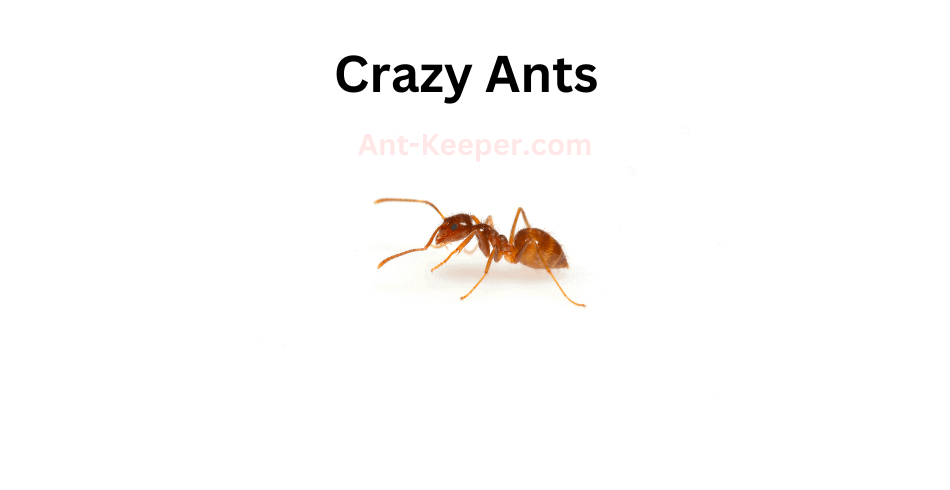
Crazy ants, also known as Nylanderia fulva, are a species of ant that belong to the family Formicidae.
They are small in size, measuring only about 2.2 to 3 mm in length, and are reddish-brown in color.
These ants are known for their erratic and unpredictable behavior, hence the name "crazy ants."
Crazy ants are native to South America, but have since spread to other parts of the world, including North America, Asia, and Australia.
They are highly adaptable and can thrive in a variety of environments, including urban areas, forests, and grasslands.
One of the most notable characteristics of crazy ants is their ability to form large colonies with multiple queens.
This allows them to quickly establish themselves in new areas and outcompete other ant species.
Crazy ants are also known for their aggressive behavior towards other insects and animals, including humans.
In addition to their aggressive behavior, crazy ants are also known for their ability to cause damage to electrical equipment.
They are attracted to electrical currents and can easily short-circuit electronics, causing damage and potentially starting fires.
Despite their small size, crazy ants are a formidable species that can have a significant impact on their environment.
As they continue to spread to new areas, it is important to monitor their behavior and take steps to control their populations in order to minimize their impact on ecosystems and human infrastructure.
27) Orectognathus
Orectognathus is a genus of ants belonging to the family Formicidae.
The ants in this genus are known for their elongated mandibles, which are used for capturing prey and defending their colonies.
Orectognathus ants are typically found in forested areas and are known to be active foragers, often hunting for insects and other small invertebrates.
The workers of Orectognathus ants are typically small in size, measuring between 2-5mm in length.
They are typically reddish-brown in color and have a distinctively elongated head and mandibles.
The queen ants are larger in size, measuring up to 10mm in length, and are responsible for laying eggs and maintaining the colony.
Orectognathus ants are known to be highly territorial and will aggressively defend their colonies against intruders.
They are also known to be highly adaptable and can thrive in a variety of different environments, including both tropical and temperate regions.
Despite their small size, Orectognathus ants play an important role in their ecosystems.
They are known to be important predators of other insects and can help to control populations of pests in their habitats.
Additionally, they are an important food source for many other animals, including birds and small mammals.
Overall, Orectognathus ants are fascinating creatures that play an important role in their ecosystems.
Their unique physical characteristics and behaviors make them a fascinating subject of study for scientists and nature enthusiasts alike.
28) Paraparatrechina

Paraparatrechinabe is a species of ant that belongs to the family Formicidae.
These ants are known for their small size, typically measuring between 1.5 and 2.5 millimeters in length.
They are typically reddish-brown in color and have a slender body shape.
Paraparatrechinabe ants are commonly found in a variety of habitats, including forests, grasslands, and urban areas.
They are known for their aggressive behavior and will defend their nests fiercely against intruders.
These ants are omnivorous, meaning they will eat both plant and animal matter.
They are known to feed on a variety of foods, including nectar, honeydew, and small insects.
Paraparatrechinabe ants are social insects and live in colonies that can range in size from a few dozen to several thousand individuals.
The colony is typically led by a queen ant, who is responsible for laying eggs and maintaining the overall health of the colony.
Overall, Paraparatrechinabe ants are an important part of many ecosystems and play a vital role in maintaining the balance of nature.
Despite their small size, they are a formidable force in the world of insects and are a fascinating species to study and observe.
29) Big Headed Ants, Pheidole
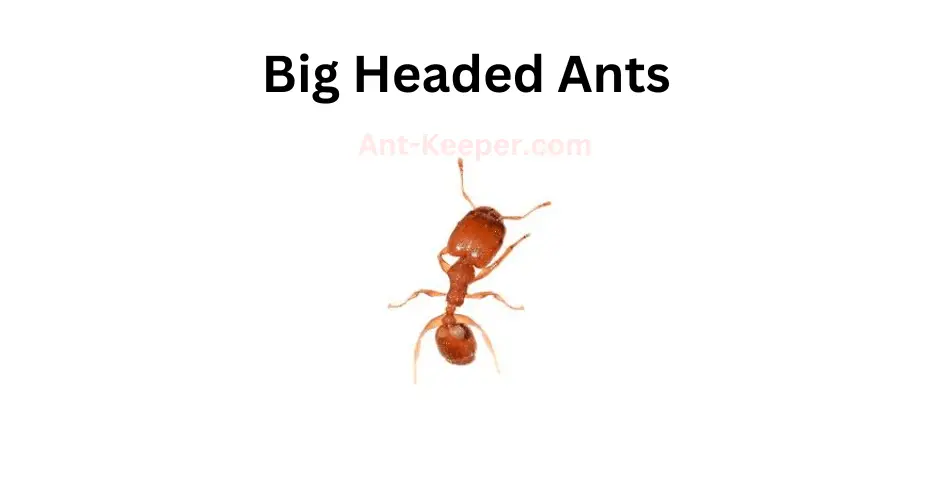
Big Headed Ants, also known as Pheidole megacephala, are a species of ant that belong to the family Formicidae.
These ants are known for their distinctive large heads, which are used for defense and communication within their colonies.
Big Headed Ants are typically found in tropical and subtropical regions, where they build their nests in soil, leaf litter, and other organic matter.
They are omnivorous, feeding on a variety of insects, seeds, and other small organisms.
One of the most interesting aspects of Big Headed Ants is their social behavior.
They live in large colonies, with a queen ant at the center of the hierarchy.
The queen is responsible for laying eggs, while the other ants in the colony perform various tasks such as foraging for food, caring for the young, and defending the colony from predators.
Big Headed Ants are also known for their ability to displace other ant species in their habitats.
They are aggressive and have been known to attack and kill other ants, as well as compete with them for resources.
Despite their aggressive behavior, Big Headed Ants are not considered a major pest species.
However, their ability to displace other ant species and their potential impact on native ecosystems make them an important species to study and monitor.
30) Platythyrea

Platythyreabe is a species of ant that belongs to the family Formicidae.
These ants are known for their unique physical characteristics, including their flattened bodies and elongated mandibles.
Platythyreabe ants are typically found in forested areas and are known to be active foragers, often hunting for small insects and other invertebrates.
One of the most interesting aspects of Platythyreabe ants is their social behavior.
These ants live in colonies that are typically composed of several hundred individuals.
Within these colonies, there is a strict hierarchy, with a single queen ant at the top.
The queen is responsible for laying eggs, while the other ants in the colony are responsible for caring for the young and maintaining the nest.
Platythyreabe ants are also known for their aggressive behavior.
When threatened, these ants will use their elongated mandibles to defend themselves and their colony.
They are also known to release a chemical signal that alerts other ants in the colony to the presence of a threat.
Despite their aggressive behavior, Platythyreabe ants play an important role in their ecosystem.
They help to control populations of small insects and other invertebrates, and they also serve as a food source for larger predators.
Overall, Platythyreabe ants are fascinating creatures that offer a unique glimpse into the complex world of social insects.
31) Spiny Ants, Polyrhachis
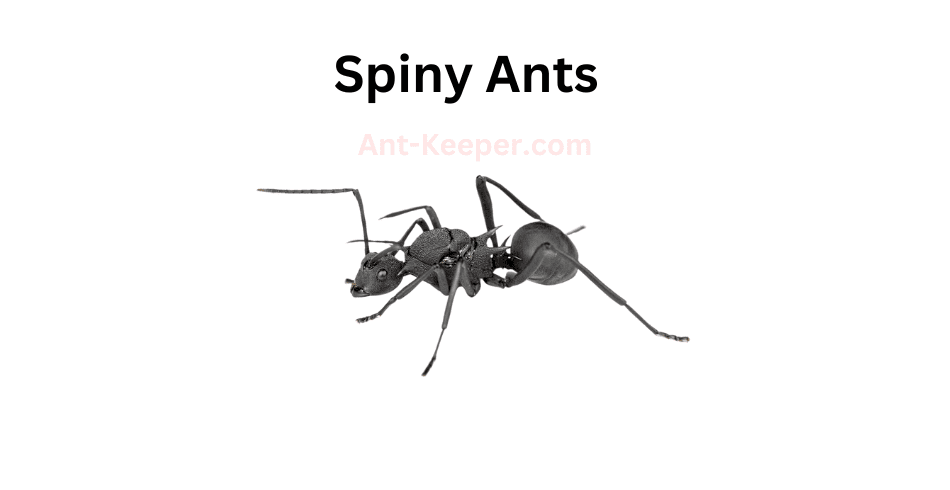
Spiny ants, also known as Polyrhachis sp., are a species of ants that belong to the family Formicidae.
These ants are known for their unique appearance, with spines covering their bodies that serve as a form of protection against predators.
Spiny ants are typically black or dark brown in color and range in size from 4 to 10 millimeters in length.
They are found in a variety of habitats, including forests, grasslands, and urban areas.
These ants are known for their aggressive behavior and will defend their nests fiercely.
Spiny ants are omnivores, feeding on a variety of food sources including insects, nectar, and honeydew.
They are also known to tend to aphids, protecting them from predators in exchange for the sweet honeydew they produce.
These ants are social insects, living in colonies that can range in size from a few dozen to several thousand individuals.
The colony is typically led by a queen ant, who is responsible for laying eggs and maintaining the colony's population.
Spiny ants play an important role in their ecosystems, serving as both predators and prey.
They help to control the populations of other insects and provide food for larger animals such as birds and reptiles.
Overall, spiny ants are a fascinating species of ants that are known for their unique appearance and aggressive behavior.
They play an important role in their ecosystems and are an important part of the natural world.
32) Porthole Ants, Ponera
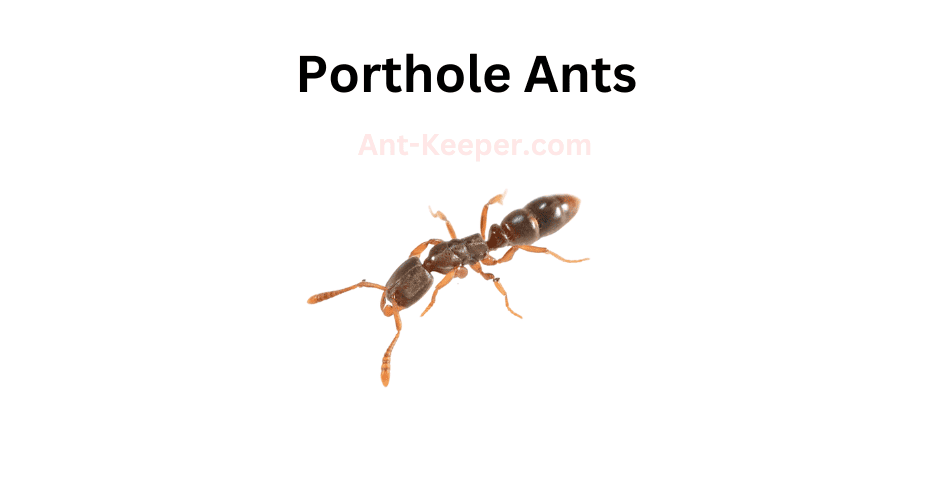
Porthole ants, also known as Temnothorax spp., are a genus of small ants that are commonly found in forested areas.
These ants are known for their unique nesting behavior, as they create their nests in small cavities or "portholes" in trees, rocks, or other natural structures.
Porthole ants are typically less than 5mm in length and have a dark brown or black coloration.
They are social insects and live in colonies that can range from a few dozen to several hundred individuals.
The colonies are typically led by a single queen, who is responsible for laying eggs and maintaining the colony's reproductive population.
One of the most interesting aspects of porthole ants is their nesting behavior.
Unlike many other ant species, porthole ants do not create large underground nests.
Instead, they seek out small cavities in natural structures and use them as their nesting sites.
These cavities can be as small as a few millimeters in diameter and are often located high up in trees or on rocky outcroppings.
Porthole ants are also known for their ability to adapt to changing environmental conditions.
They are able to quickly relocate their nests if their current nesting site becomes unsuitable due to factors such as flooding or predation.
This adaptability allows them to thrive in a variety of habitats, from temperate forests to arid deserts.
Overall, porthole ants are a fascinating and unique species of ant that have adapted to their environment in a variety of ways.
Their nesting behavior and adaptability make them an important species to study for understanding the ecology of forested areas.
33) Probolomyrmex
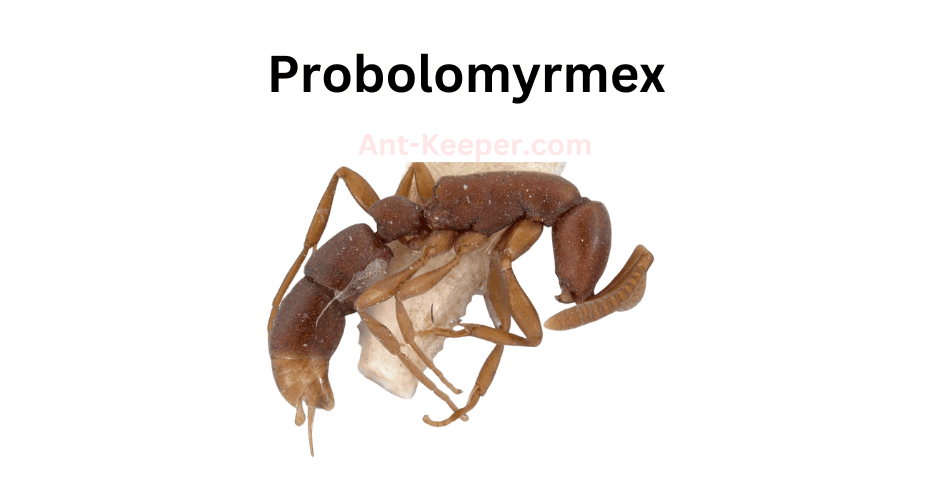
Probolomyrmex is a genus of ants that belongs to the subfamily Proceratiinae.
These ants are known for their unique morphology, which includes a long and slender body, a narrow head, and elongated mandibles.
The genus is characterized by the presence of a distinct petiole, which separates the thorax and the abdomen.
Probolomyrmex ants are typically found in tropical and subtropical regions, where they inhabit a variety of habitats, including forests, grasslands, and deserts.
They are known to be highly aggressive and territorial, often engaging in fierce battles with other ant species.
One of the most interesting aspects of Probolomyrmex ants is their social behavior.
These ants are known to be highly organized, with a well-defined caste system that includes workers, soldiers, and reproductive individuals.
The workers are responsible for foraging, nest maintenance, and caring for the young, while the soldiers defend the colony against predators and other threats.
Despite their small size, Probolomyrmex ants play an important role in their ecosystem.
They are known to be efficient predators, feeding on a variety of insects and other small invertebrates.
They also help to aerate the soil and distribute nutrients, which can have a positive impact on plant growth.
Overall, Probolomyrmex ants are a fascinating and important group of insects that are worthy of further study and conservation efforts.
34) Pseudonotoncus
Pseudonotoncusbe is a species of ant that belongs to the Formicidae family.
These ants are known for their small size, measuring only a few millimeters in length.
They have a dark brown or black coloration and a shiny exoskeleton.
Pseudonotoncusbe ants are typically found in forested areas, where they build their nests in soil or leaf litter.
They are known to be omnivorous, feeding on a variety of food sources including insects, nectar, and plant sap.
One interesting characteristic of Pseudonotoncusbe ants is their ability to produce formic acid as a defense mechanism.
When threatened, these ants will release formic acid from their bodies, which can deter predators and other threats.
Pseudonotoncusbe ants are also known for their social behavior.
They live in colonies that can range in size from a few dozen to several hundred individuals.
Within these colonies, there is a clear division of labor, with some ants specializing in foraging, while others focus on caring for the young or defending the nest.
Overall, Pseudonotoncusbe ants are fascinating creatures that play an important role in their ecosystems.
Despite their small size, they are a vital part of the food chain and contribute to the health and balance of their environment.
35) Sphinctomyrmex
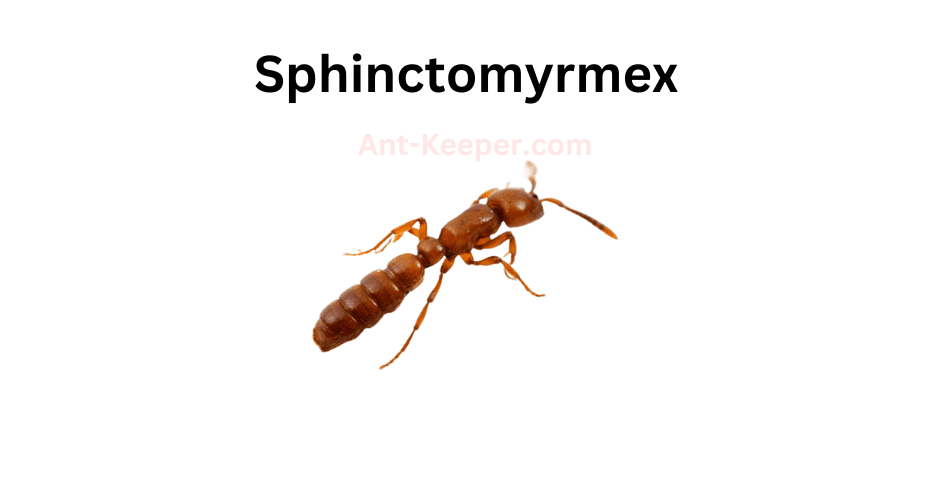
Sphinctomyrmex is a genus of ants that belongs to the subfamily Myrmicinae.
These ants are known for their unique morphology, which includes a distinct constriction between the thorax and abdomen, giving them their common name of "waist ants."
Sphinctomyrmex ants are relatively small, with workers measuring between 2-5mm in length.
They are typically reddish-brown in color, with a shiny exoskeleton.
These ants are known for their aggressive behavior, and will readily defend their nests against intruders.
One of the most interesting aspects of Sphinctomyrmex ants is their reproductive strategy.
Unlike many other ant species, Sphinctomyrmex queens do not mate with multiple males.
Instead, they mate with a single male and store his sperm in a specialized organ called the spermatheca.
This allows the queen to produce offspring with a high degree of relatedness, which may confer certain advantages in terms of colony cohesion and cooperation.
Sphinctomyrmex ants are found in a variety of habitats, including forests, grasslands, and deserts.
They are known to forage on the ground and in the understory, and will feed on a variety of food sources, including insects, nectar, and honeydew.
Overall, Sphinctomyrmex ants are a fascinating group of insects that exhibit a number of unique traits and behaviors.
Their distinctive morphology, aggressive behavior, and unusual reproductive strategy make them a subject of interest for researchers and ant enthusiasts alike.
36) Stigmacros
Stigmacrosbe is a species of ant that belongs to the family Formicidae.
These ants are known for their unique physical characteristics, including their elongated mandibles and large eyes.
Stigmacrosbe ants are typically found in forested areas, where they build their nests in soil or leaf litter.
One interesting aspect of Stigmacrosbe ants is their social behavior.
They live in colonies that are typically composed of a queen, workers, and soldiers.
The queen is responsible for laying eggs, while the workers and soldiers are responsible for maintaining the nest and protecting it from predators.
Stigmacrosbe ants are also known for their ability to communicate with one another through the use of pheromones.
These chemical signals allow the ants to coordinate their activities and work together to achieve common goals.
Despite their small size, Stigmacrosbe ants play an important role in their ecosystem.
They help to aerate the soil, which promotes the growth of plants, and they also serve as a food source for other animals.
Overall, Stigmacrosbe ants are fascinating creatures that have much to teach us about the natural world.
Through careful observation and study, scientists continue to uncover new insights into the behavior and biology of these remarkable insects.
37) Vampire Ants, Stigmatomma
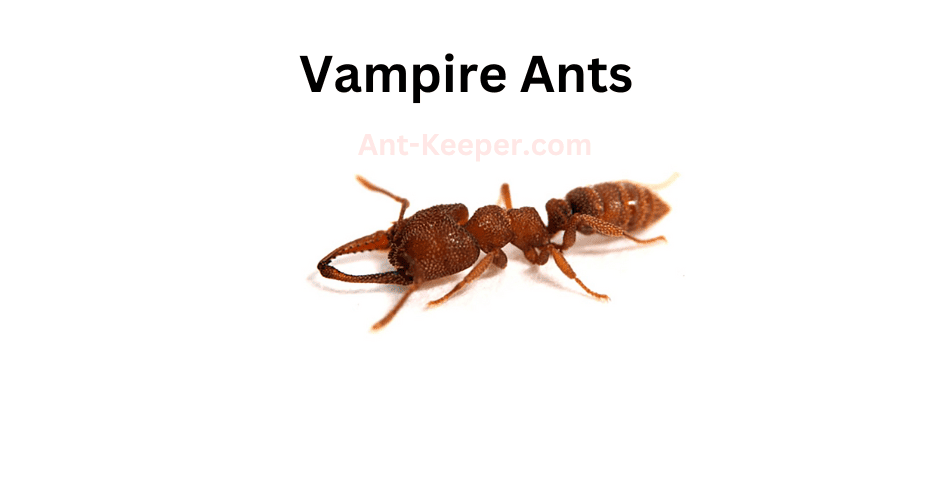
Vampire ants, also known as blood-sucking ants, are a species of ants that feed on the blood of other insects.
These ants are known for their unique feeding behavior, which involves biting into the exoskeleton of their prey and then sucking out their blood.
Vampire ants are typically found in tropical and subtropical regions, where they live in colonies of up to several thousand individuals.
They are known for their aggressive behavior and will attack other insects, including larger prey such as grasshoppers and caterpillars.
One of the most interesting aspects of vampire ants is their ability to adapt to their environment.
In some cases, these ants have been known to feed on the blood of their own colony members when other sources of food are scarce.
Vampire ants are also known for their unique physical characteristics.
They have long, curved mandibles that are used to bite into the exoskeleton of their prey.
They also have specialized mouthparts that allow them to suck out the blood of their victims.
Despite their aggressive behavior and blood-sucking tendencies, vampire ants play an important role in their ecosystem.
They help to control the populations of other insects and contribute to the overall balance of their environment.
Overall, vampire ants are a fascinating species of ants that have adapted to their environment in unique and interesting ways.
Their behavior and physical characteristics make them a subject of interest for scientists and nature enthusiasts alike.
38) Miniature Trap-Jaw Ants, Strumigenys
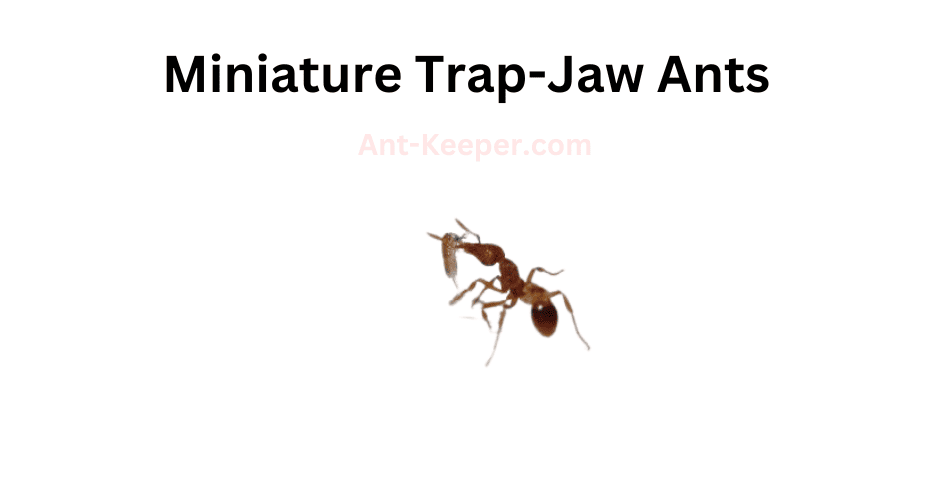
The Miniature Trap-Jaw Ants, scientifically known as Odontomachus sp., are a species of ants that belong to the family Formicidae.
These ants are known for their unique and powerful mandibles, which they use to capture prey and defend their colonies.
The Miniature Trap-Jaw Ants are relatively small in size, measuring only a few millimeters in length.
They have a dark brown or black coloration and a slender body shape.
Their most distinctive feature is their mandibles, which are elongated and can snap shut with incredible force.
These mandibles are used to capture prey, crush seeds, and defend the colony against predators.
The Miniature Trap-Jaw Ants are found in a variety of habitats, including forests, grasslands, and deserts.
They are known to be active during the day and are often seen foraging for food.
These ants are omnivorous and feed on a variety of food sources, including insects, nectar, and seeds.
The Miniature Trap-Jaw Ants are social insects and live in colonies that can range in size from a few dozen to several thousand individuals.
The colony is typically led by a queen, who is responsible for laying eggs and maintaining the colony's population.
The workers are responsible for foraging, caring for the young, and defending the colony.
Overall, the Miniature Trap-Jaw Ants are fascinating insects that have evolved unique adaptations to survive in their environment.
Their powerful mandibles and social behavior make them an important part of many ecosystems.
39) Tapinoma
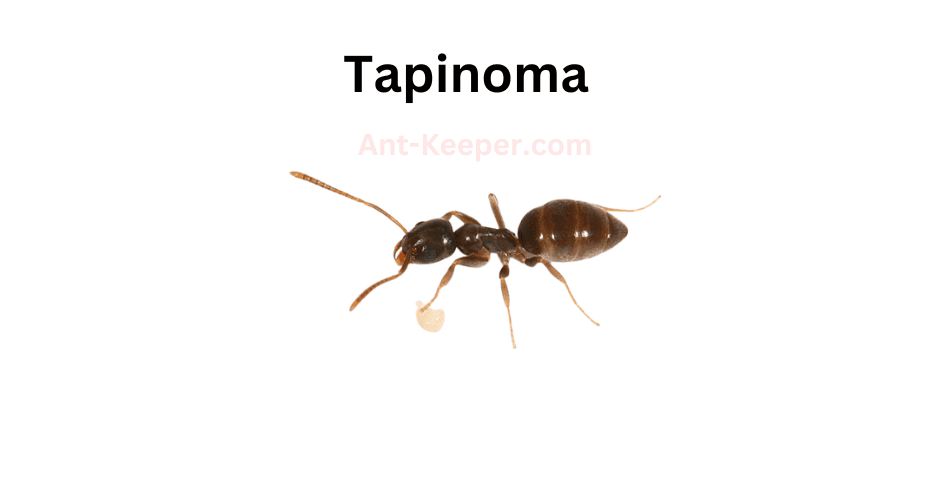
Tapinoma is a genus of ants that belongs to the family Formicidae.
The species Tapinoma is a small ant that measures about 2-3 mm in length.
They are commonly found in urban and suburban areas, and are known to invade homes and buildings in search of food and shelter.
Tapinoma ants are light brown in color and have a slender body with long legs.
They have a distinctively shaped head that is wider than their thorax, and they possess a pair of antennae that are bent at a right angle.
These ants are known for their ability to form large colonies, which can consist of thousands of individuals.
Tapinoma ants are omnivorous and feed on a variety of food sources, including insects, nectar, and honeydew.
They are also known to scavenge for food in garbage cans and other waste areas.
These ants are attracted to sweet and sugary substances, and will often invade kitchens and pantries in search of food.
Tapinoma ants are not known to be aggressive towards humans, but they can become a nuisance when they invade homes and buildings.
They are known to build their nests in wall voids, under floors, and in other hidden areas.
If left unchecked, these ants can cause damage to structures and can contaminate food sources.
Overall, Tapinoma ants are a common pest in many parts of the world.
While they are not harmful to humans, they can be a nuisance when they invade homes and buildings.
Proper pest control measures can help to prevent infestations and keep these ants at bay.
40) Pavement Ants, Tetramorium
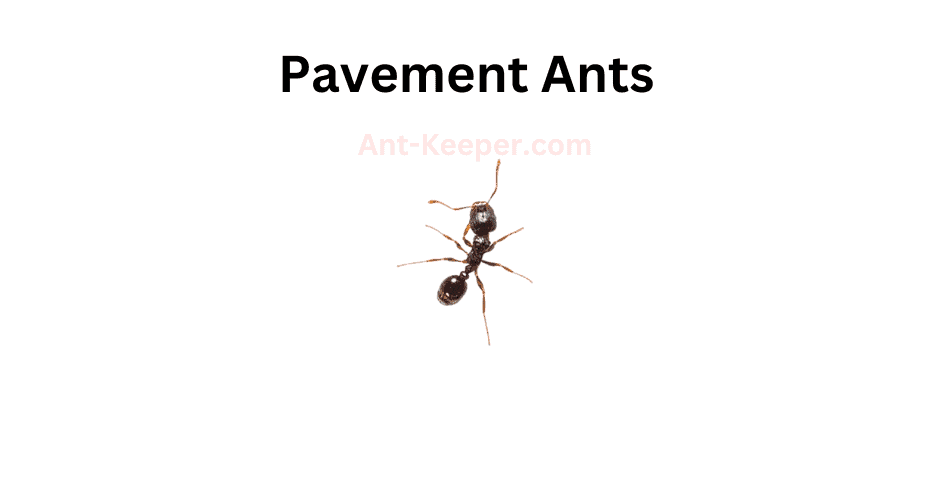
Pavement ants, also known as Tetramorium caespitum, are a species of ant that belong to the family Formicidae.
These ants are commonly found in urban and suburban areas, where they build their nests in cracks and crevices in pavement, sidewalks, and buildings.
Pavement ants are small in size, measuring between 2.5 to 4 mm in length.
They are typically dark brown or black in color, with lighter colored legs and antennae.
These ants are known for their aggressive behavior and will defend their nests fiercely against intruders.
Pavement ants are omnivorous, feeding on a variety of foods including insects, seeds, and sweet substances such as honeydew and nectar.
They are also known to scavenge for food in garbage cans and other waste areas.
Pavement ants are social insects, living in colonies that can range in size from a few hundred to several thousand individuals.
The colony is typically led by a queen ant, who is responsible for laying eggs and maintaining the colony.
Pavement ants are considered a nuisance pest, as they can invade homes and buildings in search of food and shelter.
They are also known to cause damage to pavement and other structures by excavating soil and creating tunnels.
Overall, pavement ants are a common and adaptable species of ant that play an important role in urban ecosystems.
While they may be a nuisance to humans, they are an important food source for many other animals and help to maintain the balance of the ecosystem.
Check Out Some Of Our Other Ants By Location Posts
| Types Of Ants In Goias, Brazil | Nestled in the heart of Brazil’s central-western region lies the state of Goiás, a land of diverse landscapes and unique wildlife. With a tropical savanna ... |
| Types Of Ants In Singapore | Singapore, a small island city-state located in Southeast Asia, boasts a unique environment that is home to a diverse range of flora and fauna. The ... |
| Types Of Ants In Mendoza, Argentina | Mendoza, a province located in the western region of Argentina, is a land of diverse landscapes and unique wildlife. The region is known for its ... |
| Types Of Ants In Chubut, Argentina | Chubut, a region located in the southern part of Argentina, is a place of natural beauty and diverse wildlife. With a varied landscape that includes ... |
| Types Of Ants In New Brunswick, Canada | New Brunswick, located in eastern Canada, is a region known for its diverse and unique environment. With a mix of forests, wetlands, and coastal areas, ... |
